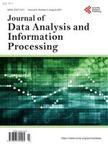Comparative Analysis of Machine Learning Models for Customer Churn Prediction in the U.S. Banking and Financial Services: Economic Impact and Industry-Specific Insights
Comparative Analysis of Machine Learning Models for Customer Churn Prediction in the U.S. Banking and Financial Services: Economic Impact and Industry-Specific Insights作者机构:Department of Data Science Carolina University Winston-Salem NC USA Department of Computer Science Austin Peay State University Clarkesville TN USA Department of Statistical Sciences Wake Forest University Winston-Salem NC USA
出 版 物:《Journal of Data Analysis and Information Processing》 (数据分析和信息处理(英文))
年 卷 期:2024年第12卷第3期
页 面:388-418页
学科分类:0202[经济学-应用经济学] 02[经济学] 020205[经济学-产业经济学]
主 题:Churn Prediction Machine Learning Economic Impact Industry-Specific Insights Logistic Regression Random Forest Neural Networks
摘 要:Customer churn poses a significant challenge for the banking and finance industry in the United States, directly affecting profitability and market share. This study conducts a comprehensive comparative analysis of machine learning models for customer churn prediction, focusing on the U.S. context. The research evaluates the performance of logistic regression, random forest, and neural networks using industry-specific datasets, considering the economic impact and practical implications of the findings. The exploratory data analysis reveals unique patterns and trends in the U.S. banking and finance industry, such as the age distribution of customers and the prevalence of dormant accounts. The study incorporates macroeconomic factors to capture the potential influence of external conditions on customer churn behavior. The findings highlight the importance of leveraging advanced machine learning techniques and comprehensive customer data to develop effective churn prevention strategies in the U.S. context. By accurately predicting customer churn, financial institutions can proactively identify at-risk customers, implement targeted retention strategies, and optimize resource allocation. The study discusses the limitations and potential future improvements, serving as a roadmap for researchers and practitioners to further advance the field of customer churn prediction in the evolving landscape of the U.S. banking and finance industry.



